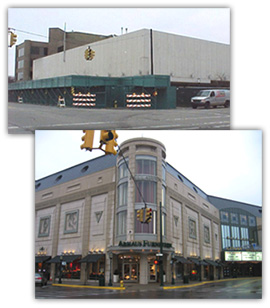
In response to more than three decades of population loss and commercial decline, the city of Birmingham, MI, committed to building a new identity as “The Walkable Community.”A long-range vision, along with traffic-calming measures, ordinance changes, and more over the past two decades has seen the downtown’s Walk Score reach 92, a “walker’s paradise.”
“We did a downtown master plan in 1996,” says Jana Ecker, planning director for the city. “In that plan, one of the biggest pushes was on highlighting our urban shopping district.”
Rather than competing with the malls, the city enhanced what was already good about the downtown by making it more walkable, adding more sidewalks, strengthening the retail base, increasing the number of storefront windows, and activating the streets with outdoor dining and special events.
“If you want a walkable downtown, you can’t take up an entire block with parking, so we put retail stores along the first floor,” says Ecker. One example is the 12-screen movie theater downtown. “Its entrance is on the street, but that whole building is lined with restaurants and retail, with the movie theaters tucked in back so that you still have a big, functioning, stadium-sized movie theater, but on the street, it just feels like a regular retail street.”
The full article appeared in our print edition. To always get the full story, read Downtown Idea Exchange.
